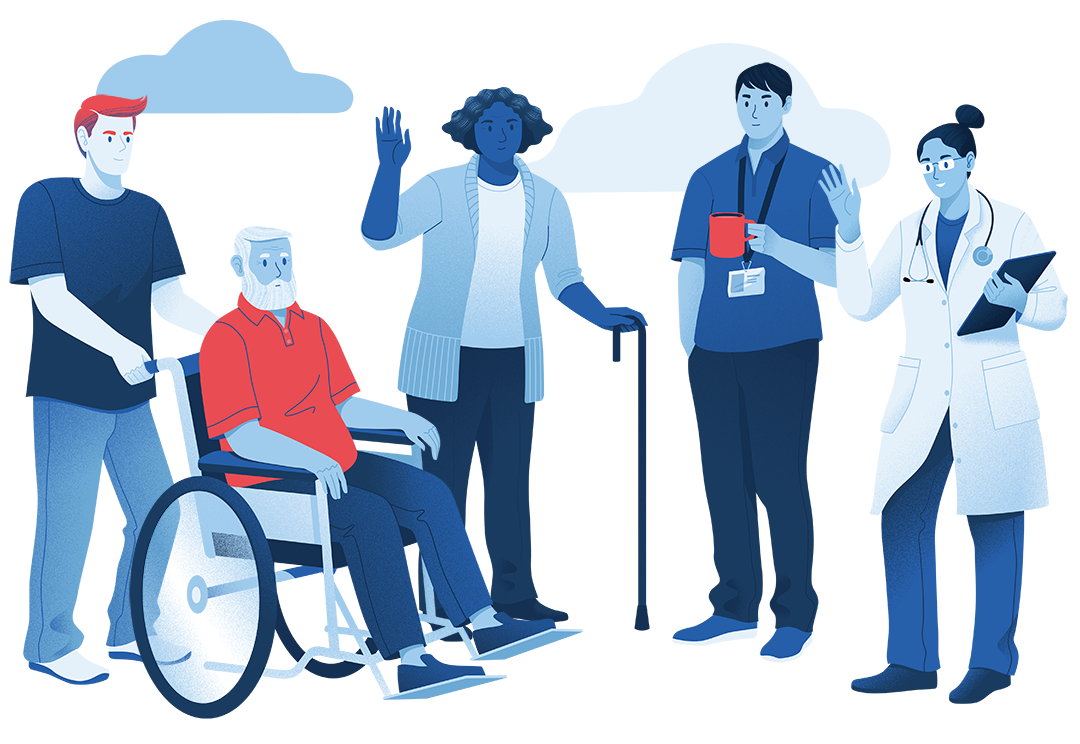Engaging communities in Sandwell
16th January 2020

Communities know the problems they want to fix, and how to fix them
There is a great deal of interest in asset-based approaches to community development (‘ABCD’) and how they can be used to stimulate active communities. An excellent example of this approach can be seen in the work taking place in Sandwell under the Stronger Sandwell banner.
Stronger Sandwell is an initiative, developed by Sandwell Public Health over the last year, to try and change the way that health and wellbeing services are developed. The project grew out of the recognition that the communities across Sandwell are the area’s biggest strength. By working with local people to design and build services, that can be run by local people, Sandwell Public Health can build on those strengths. This is a new way of looking at the ways volunteers can make a difference in health and social care. The idea that underpins this is that people in the community will give their time to help deliver ideas and even services that are important to them.
Through talking to people in the six towns that make up Sandwell, the Council has identified the priorities important to local people and who in the community can be supported to help address those priorities.
Ride Activators
There was strong community support for increased opportunities to cycle across Sandwell. Sandwell Public Health approached the community to find people with an interest in cycling that could be trained to become Ride Activators.
Ride Activators receive a British Cycling qualification, first aid training and a Ride Activator kit. Ride Activators can then lead rides for people that are interested in taking up cycling but are looking for support to do so. So far a number of volunteer Ride Activators have been trained and an increase in cycling has been seen across Sandwell.
Childhood Obesity
The Stronger Sandwell approach to tackling Childhood Obesity evolved from concerns raised by local parents with materials developed as part of the National Child Measurement Programme. Parents and young people believed that the national feedback letters were stigmatising and unhelpful. To address those deficiencies, Sandwell Council facilitated volunteers from both parents and young people to co-design a range of resources to be used in schools and homes across Sandwell.
These resources include
- Change4life ‘Top Tips’
- ‘Sugar Swap’ ideas
- Physical activities for the family
- Emotional well-being
By designing an approach that better met the needs of local parents and children it is hoped that this will, in turn, improve childhood obesity rates across Sandwell.
There are a number of benefits in taking this volunteer-led approach to tackling public health priorities
Community driven intelligence
By placing Public Health staff within each of six towns the process of identifying priorities becomes as dependent on relationships as it does on data. Communities can set out the types of services they would like to take part in designing either directly through Public Health staff or through initiatives like Big Ideas. This means that communities are less likely to feel their services are imposed on them.
Sustainable services
The move to support local people to deliver their own services has the added benefit of making service provision more sustainable. The relatively low cost of supporting volunteers to develop the skills required to deliver local services means that local services are controlled by the volunteers themselves and less vulnerable to the changing Local Authority funding environment.
Identity
The co-production of these type of services provides a useful way to develop an identity for Public Health. Instead of being a remote, contracting, organisation Public Health is actively taking part in the development of things that the public want to see.
Challenges
Resources
One of the key challenges is finding the resources to support these initiatives. Public Health has a range of statutorily mandated services that need to be delivered from within current budgets. At present this means that, within Sandwell, around 20% of the overall budget can be used to take this community-based approach to services development.
Letting Go
One of the biggest challenges in supporting volunteers to design and deliver services is recognising that the real benefit is achieved once you let go. Public sector organisations, that are accountable for how they spend money, need to build strong relationships within communities in order to create the trust needed to let those same communities deliver against their priorities.
Lessons Learned
For relatively small investments huge benefits can be achieved when working with communities. These types of initiatives may be low cost but they can also be high profile. As Integrated Care Systems and STPs begin to come together they are naturally wanting to develop identities that mean something to local people. Fostering a strengths-based approach and support for community led activities could be exactly the sort of investment that will give newly formed Health Systems local legitimacy.
